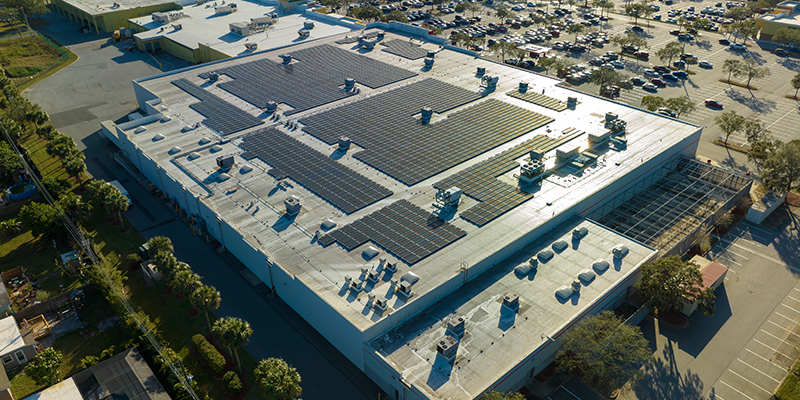By Kathryn Hamilton, CAE
Artificial intelligence (AI) is quickly moving from buzzword to business essential, particularly in procurement and supply chain management. While often discussed interchangeably with broader technology, AI is best understood as a powerful subset of technology that learns, predicts and automates. For businesses of all sizes, it’s becoming the great equalizer, offering tools once reserved for large organizations with deep resources.
The Collaborative Real Estate Development and Solutions (CREDS) Consortium, of which NAIOP is a founding member, recently hosted a webinar on how AI and technology are transforming procurement practices and driving smarter, more resilient supplier relationships across real estate.
The webinar featured Wissam Akra, CEO and founder, Tough Leaf; Allison Anderson, Ph.D., research and impact advisor, Building Markets; Charmaine Brown, CEO, Connexions Consulting Inc.; and Elizabeth Brown, executive director, Building Markets. It was moderated by Ayris Scales, senior vice president of social responsibility and global initiatives, Nareit.
Here are takeaways on why AI matters in procurement and how practitioners can turn data into action.
Procurement Process Advantages
Procurement success depends on data, including vendor certifications, past performance, geographic requirements, revenue levels and more. But the sheer volume and fragmentation of this information make it nearly impossible to manage manually. AI can expediate this data evaluation by:
- Speed and efficiency. Traditional sourcing and vendor vetting can take weeks or months. AI-enabled tools cut through thousands of supplier records in seconds, identifying the most qualified matches based on predefined requirements.
- Risk mitigation. AI can flag financial instability, supply bottlenecks or concentration risk before they become costly problems. In today’s volatile supply chain environment, this proactive capability is invaluable.
- Leveling the playing field. Small and mid-sized firms gain access to sourcing power and insights that were once the domain of large corporations. AI democratizes procurement by expanding networks and surfacing diverse, local and specialized vendors.
- Future-proofing. Early adopters gain a competitive advantage as they streamline compliance, strengthen inclusion and respond more effectively to shifting regulations.
AI can be used to transform static data into actionable intelligence by automating collection, surfacing insights and predicting which vendors are most likely to meet project needs. This is especially powerful in areas like supplier diversity. AI tools make it possible to maintain comprehensive, up-to-date databases and to connect opportunities directly with qualified small businesses.
Implementing AI: Practical Considerations
Adopting AI in procurement does not mean replacing human teams – it means augmenting them. But successful implementation requires strategy and patience:
- Start with a phased approach. Focus first on the most essential features where AI can demonstrate quick wins before scaling to more complex projects.
- Invest in people, not just tools. Adoption succeeds when teams understand the “why” and feel supported through training and capacity building.
- Anchor to clear goals. Whether the priority is compliance, profitability, inclusion or efficiency, businesses should identify measurable outcomes before deploying new platforms.
- Find the right partners. It’s rarely efficient to build systems from scratch. Purpose-built tools already exist that align to industry needs.
Tools and Market Access
For businesses looking to tap into government procurement, several AI-enabled platforms help identify relevant requests for proposals. Tools such as GovWin, GovSpend and Dodge Network provide access to opportunities across multiple sectors. For small and local vendors, platforms like Tough Leaf are free to join and designed specifically to connect diverse suppliers with buyers.
Successful adoption goes beyond technology – it’s about collaboration. Peer exchanges like the CREDS Consortium act as learning labs, where organizations test tools, share lessons learned and could even negotiate collective access to platforms. This cooperative model ensures that no single organization bears the full cost or risk of experimentation.
Looking Ahead
AI will not replace procurement professionals, but it is fundamentally reshaping how they work. From regional alliances to small vendor networks, it helps organizations see the bigger picture, act with more precision and create greater impact. The businesses and agencies that embrace both the technology and the collaborative playbooks around it will be best positioned to build resilient, inclusive and efficient supply chains.








